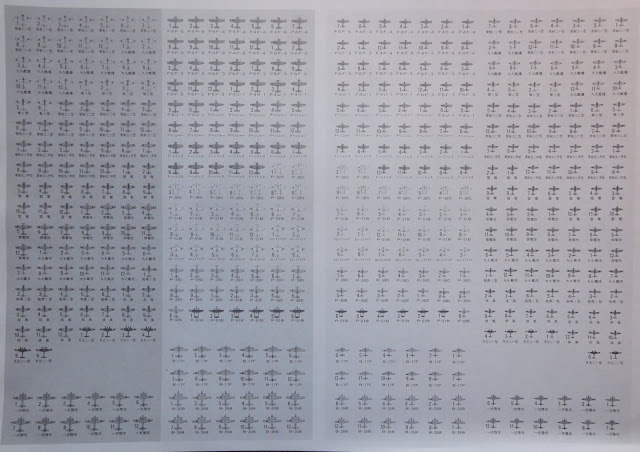そういえばおれ寛永通宝持ってます(原明に)。
Thursday, 6 June 2013
an oval gold coin
"1 ryō(両) is the price of rice of 1 koku(石).
It seems defined so on early in the Tokugawa Shogunate."
A little while ago、I read such a sentence on someone's blog.
※I don't know now who it was、but it helps me a lot(lol).
・・・・・・・・・
When Kinjiro came here、the annual tributes in the Utsu family territory were 1005 bales and 127 ryō.
And the annual tributes of 100 years ago were 3100 bales and 200 ryō.
Of course the annual tribute was paid in rice.
And apart from that、the annual tribute from the harvest of the field crops was paid in money as an exception.
Most of the breakdown of 127 ryō and 200 ryō、probably it was annual tribute from the field crops.
・・・・・・・・・
By the way、1 koku is 10 to(斗)、about 180 liters.
180 liters ≒150 kg.
※In the future、it is the same as above(lol).
Current price of rice 5 kg at Japan.
It is about $ 20.
In short、Price of rice 150 kg is $600.
We can't easily compare it、but 1 ryō is about $600.
It is possible to estimate that way.
However、I have calculated at 1 ryō was $1,000 until now.
($1≒¥100)
"1 ryō was about ¥ 100,000."
Because I often read a description like this.
"Difference of its $400.
In short、value of rice was higher than now.
Price of rice was reduced by modern technological innovation."
I thought so.
※This is a fairly rough idea and even now、the price is quite different depending on the quality of the rice.
※According to the official exchange rate standard of April 1949、the dollar is ¥360.
Of course I think Japan is a chaos period after 1945.8.15、but In 1950、the price of rice is 10 kg ¥990.
And in 1955、the college graduate starting salary 11,000 yen.※
※I think that this kind of calculation was done in Takahashi Katsuhiko san's detective novel "Hokusai Satsujin Jiken".
※And of course、the value of $ 1 in the United States may be significantly different from what it is now. 20220610.
・・・・・・・・・
Incidentally 1ryō was a gold coin.
It called "Koban".(小判)
This gold coin was present before the Tokugawa Shogunate、but its size was not constant.
It was seemd used after the weighing by balance every time.
"The weight of Koban is 4,76 monme.(匁)
The content of gold in Koban is 86,79%."
Tokugawa Shogunate defined so.
1 monme is about 3,75g.
3,75×4,76=17,85
17,85×0,8679=15,492015
And I examined the price of gold bullion at Japan today.
(2013/06/05 16:47・Japan time)
The price of 1g is about ¥4552.
4552×15,492015=70519,65228
In short、1 ryō is about $ 705.
When the analogy from the price of rice、1 ryō is about $ 600.
When the analogy from the price of gold bullion、1 ryō is about $ 705.
『Balance of gold and rice of then and now
It was about the same.
※In fact、when I wrote this first、I calculated at 180 liters≒180 kilograms($720).
It is by its conclusion.※』
※Of course、it is not possible to make a simple comparison、and it may be said that the "rice price" is close、but I think it is a problem that a difference of 100 dollars can be obtained just by exchanging money between Japan and the United States (a digression based on the assumption). 20220610.
Friday, 7 June 2013
coins
Battle of Sekigahara in 1600、hegemony of the Tokugawa was determined by the victory of this battle.
And Tokugawa won the most gold and silver mines all over Japan.
Following year、this monetary system was started.
Especially at the gold mine on Sado Island in Echigo、Japan's largest amount of gold and silver were mined.
It became the basis of this monetary system.
But mined amount was carried out gradually decreased by a variety of circumstances.
(For example、water accumulated in the mine shaft.)
And national economic activity became more active in inverse proportion to it.
As result the absolute amount of coins began to run short.
(Koban in particular.)
"Reduce the content of gold in Koban."
1695、finally Tokugawa Shogunate made this decision.
・・・・・・・・・
By the way、coins of the first of Tokugawa Shogunate、it was something like the following.
Bu(分) of one-quarter of ryō.
Its gold content was same with ryō.
Chōgin(丁銀)
This was silver coin.
But its weight was not constant.
(about 43 monme/about 161,25g)
And its silver content of 80%
Mameitagin(豆板銀)
This was also silver coin and its weight was also not constant.
(One-tenth of chōgin basically)
These two types of silver coins were currency by weight.
It was used in combination.
Of course there was copper coins as the smallest(?) currency unit.
However、at first Tokugawa Shogunate used copper coins of before them.
And therefore quality of its coins was not constant.
Its negative effects went spread gradually.
Gold coins、silver coins and copper coins.
Its exchange rate has been determined in 1609.
1636、Tokugawa was casting a copper coin of uniform quality.
It called "Kan'ei tsūhō".(寛永通宝)
I'm neither the government of the Emperor nor the Tokugawa shogunate.
WE ARE ALL MEN.And I entrust things that is troublesome to the lower classes.
Guernica、or Siege annihilation operation for the childrens of the future.
we are amaterasu kingdom dimensions
ゴミ(処刑)のニセモノは当然ゴミ(処刑)。
そうそう、これまた、おれが言ってるだけですが。
亡くなられていないということだ、と、そう判断しました。
以前の繰り返しになりますが、世界中の軍隊は地球防衛軍、つまり自衛隊。愛国心とは他国の郷土愛を尊重すること。当然、無法には地球防衛軍として共同で対処。
王政復古
で。
ジョンウィリアムズ名義の曲はスピルバーグさんとルーカスさんの合作。
渡辺岳夫名義の曲はすべて富田勲さん作曲。
ナウシカのサントラのギターは布袋さんですが、音楽は、というか、久石譲名義の音楽の作曲はすべてYOSHIKIさん。
したがって、ジョンウィリアムズ、すぎやまこういち、渡辺岳夫、久石譲という顔の男はゴミ(処刑)。

















































































































































































